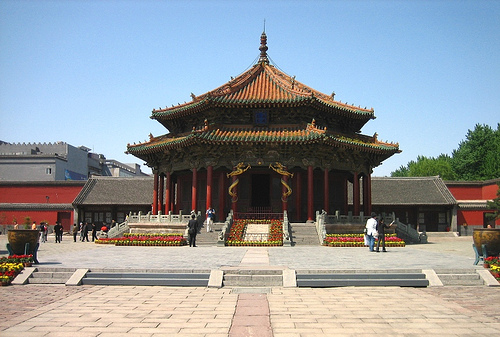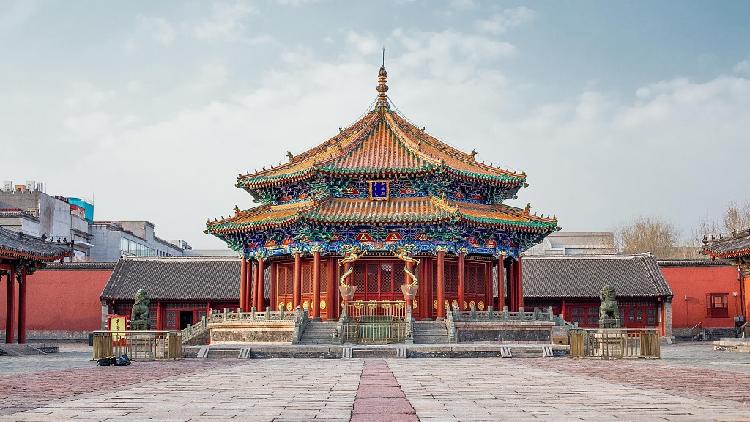Discovering Shenyang’s Imperial Palace and Manchu Heritage
Welcome to another exciting adventure on jusha.travel, your go-to source for uncovering the hidden gems of China. If you’re a traveler or culture enthusiast eager to explore the rich tapestry of China Manchu history, Shenyang Imperial Palace stands as a must-visit destination. This majestic site embodies Shenyang’s cultural heritage, offering a deep dive into the origins of the Qing Dynasty and the vibrant legacy of the Manchu people. In this Shenyang travel guide, we’ll journey through history, architecture, and cultural attractions Shenyang is renowned for, all while providing practical tips to make your China heritage tours unforgettable. Here at jusha.travel, we love sharing tips to make your China journey unforgettable! For more on historical sites in China, check out our guide to ancient sites.

The Historic Origins of Shenyang’s Imperial Palace
Nestled in the heart of Shenyang, the Shenyang Imperial Palace, often called the Mukden Palace, serves as a profound gateway to China Manchu history. Construction began in 1625 under the visionary leadership of Nurhachi, the founder of the Later Jin Dynasty, and was completed by his son, Huang Taiji, in 1636. For more on this fascinating timeline, check out this detailed resource from Wanderlyst at Step into the Past: Shenyang Imperial Palace. As the original seat of the Qing Dynasty before the capital shifted to Beijing, this palace highlights Shenyang’s cultural heritage as a strategic hub for Manchu rule in the early 17th century. For insights into other imperial palaces in China, see our post on Beijing’s Forbidden City.
What makes Shenyang Imperial Palace so special for modern travelers is its role as the only surviving imperial complex from the Qing Dynasty outside Beijing. It was here that the Manchu leaders consolidated their power, blending military strategy with cultural rituals. If you’re planning a Shenyang travel guide itinerary, consider timing your visit during the spring or autumn for milder weather, which is ideal for wandering the grounds. A practical tip: Download a translation app to make the most of the informational plaques, as they often include insights into ancient ceremonies. This site not only preserves history but also offers a window into the ethnic identity that shaped China heritage tours, making it a perfect stop for those curious about the fusion of Manchu and Han Chinese influences.
To enhance your experience, pair your visit with nearby cultural attractions Shenyang offers, like the nearby tombs of Qing emperors. Fun fact: The palace’s location in northeastern China reflects the Manchu’s nomadic roots, where they once roamed as horsemen and hunters before rising to imperial power. As you explore, you’ll feel the echoes of that era, inspiring a deeper appreciation for how Shenyang’s cultural heritage continues to influence contemporary China. For more on exploring China’s historical routes, refer to our Silk Road guide.

Architectural Splendor: Design and Structure
Delving deeper into the Shenyang Imperial Palace reveals an architectural masterpiece that seamlessly integrates Shenyang’s cultural heritage with broader Chinese traditions. Spanning about 60,000 square meters, the complex features over 300 buildings and 20 courtyards, divided into East, Middle, and West sections. Each area showcases a unique blend of Han, Manchu, and Mongolian styles, as detailed in the Wikipedia entry on Mukden Palace. This design not only follows the central axis typical of Han Chinese palaces but also incorporates distinctive Manchu preferences, such as the octagonal Dazheng Hall, adorned with elaborate rooflines and glazed tiles. For additional insights into historical Chinese architecture, check our feature on Xi’an’s Terracotta Warriors.
For travelers on China heritage tours, the palace’s use of mortise-and-tenon joints and intricate woodwork is a testament to ancient craftsmanship that has withstood centuries. Key highlights include the Ten Princes’ Pavilions in the East Section, which reflect the Qing court’s hierarchical structure and the Eight Banners military system—a core element of China Manchu history. If you’re a tech-savvy visitor, don’t miss the modern 3D modeling exhibits; for instance, drones have been used to create virtual tours, as seen in this CGTN feature: Imperial Palaces of the Ming and Qing Dynasties.
Practical advice for your visit: Wear comfortable shoes for exploring the vast grounds, and consider joining a guided tour for deeper insights—many include English translations. Food enthusiasts might enjoy stopping at local eateries nearby for Manchu-influenced dishes like sticky rice cakes or roasted meats, which echo the dynasty’s culinary traditions. This architectural splendor not only enhances Shenyang travel guide experiences but also provides a cultural bridge to understanding how technology and preservation efforts are keeping Shenyang’s cultural heritage alive today.

Manchu Cultural Heritage: Rituals, Religion, and Everyday Life
At the core of Shenyang Imperial Palace lies a vivid portrayal of China Manchu history through its rituals, religion, and daily life elements. The palace’s design incorporates shamanistic altars and colorful decorations with Cintamani motifs, reflecting the syncretic blend of Manchu spiritual practices and influences from Buddhism and Confucianism. As noted in Angelina Hue’s travelogue, Shenyang: Imperial Capital Turned Industrial Pioneer, these features highlight how the Manchu people maintained their ethnic identity even as they adopted imperial customs.
One fascinating aspect is the Eight Banners system, represented in the palace’s layout, which organized Manchu society for military and administrative purposes. Visitors can explore how this system influenced everything from court hierarchies to everyday life, offering a glimpse into cultural attractions Shenyang preserves so well. Interesting fact: The Qing emperors would return here for ancestral worship, underscoring the palace’s role in dynastic legitimacy long after moving to Beijing.
For those on Shenyang travel guide adventures, immerse yourself in local culture by attending seasonal festivals, where traditional Manchu dances and music are performed. A tip for food lovers: Try pairing your visit with regional specialties like zhajiangmian noodles or Manchu hot pot, which fuse flavors from the nomadic past with Chinese staples. These experiences align with jusha.travel‘s mission to inspire travelers through authentic cultural insights, making Shenyang’s cultural heritage a highlight for anyone exploring China’s diverse tapestry.

The Legacy: UNESCO World Heritage and Modern Significance
The enduring legacy of Shenyang Imperial Palace cements its status as a cornerstone of Shenyang’s cultural heritage and China heritage tours. Recognized as a UNESCO World Heritage site alongside early Qing tombs, this palace stands out for its completeness and unique Manchu characteristics, distinguishing it from more famous sites like Beijing’s Forbidden City. According to official sources like Shenyang Imperial Palace details, the complex symbolizes the Qing Dynasty’s pivotal era, blending architectural beauty with historical depth.
Today, as the Shenyang Palace Museum, it offers interactive exhibits that incorporate modern technology, such as augmented reality apps for virtual reconstructions. This forward-thinking approach ensures that Shenyang Imperial Palace remains relevant for contemporary travelers, bridging China Manchu history with today’s world. If you’re crafting your Shenyang travel guide, plan to spend a full day here, followed by a visit to nearby parks for a taste of local life—perhaps enjoying a picnic with regional snacks like fermented soybean dishes, which reflect Manchu culinary ingenuity.
In summary, exploring this site not only enriches your understanding of cultural attractions Shenyang has to offer but also inspires a greater appreciation for China’s evolving narrative. Whether you’re a history buff or a casual traveler, the palace’s legacy reminds us of the importance of preserving cultural roots in a rapidly changing world. For more on preserving China’s historical narratives, see our guide to Chinese festivals.
As we wrap up this journey through Shenyang Imperial Palace and its Manchu heritage, remember that sites like this are more than just landmarks—they’re gateways to understanding the soul of China. We’ve covered the historic origins, architectural wonders, cultural rituals, and modern significance, all while weaving in key elements of Shenyang’s cultural heritage and China Manchu history. Here at jusha.travel, we’re passionate about guiding you through these experiences to create lasting memories.
We’d love to hear your thoughts! Share your own Shenyang stories in the comments below, visit jusha.travel for more inspiring China travel guides, or check out related articles on cultural attractions Shenyang and beyond. Safe travels, and let’s keep exploring China together!

